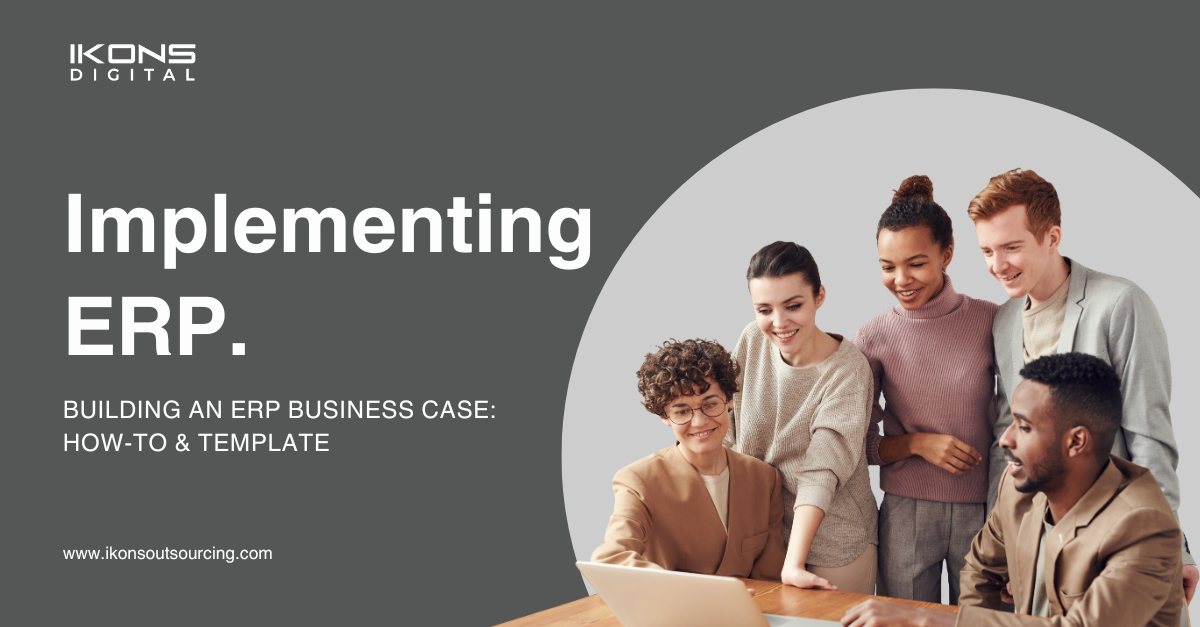Because ERP consolidates and automates critical business processes like accounting, inventory management, HR, CRM, financial planning and more, implementing it is both an exciting and serious undertaking that takes time and resources to accomplish effectively.
Most organizations considering an ERP implementation must therefore build an ERP business case that goes beyond outlining pain points and into the overarching benefits of an ERP. The business case details and formally presents the costs and benefits of such an implementation, along with the opportunities and risks—and we’ll outline that process for you here.
If your company is not yet enjoying the benefits of a modern ERP, the first step is to build a business case that illustrates the benefits, costs, opportunities and risks of launching an implementation project. By breaking down data silos, ERP connects the dots on business processes including accounting, operations, manufacturing, sales and HR; enables better FP&A and reporting; and adds efficiencies through automation technology.
A tailored ERP business case enables any organization to evaluate its specific benefits, costs and risks. The document may also serve as the basis of an ERP implementation plan because it provides the project team with clear direction on priorities and responsibilities.
Goals of Implementing ERP
Organizations typically decide to implement or upgrade an outdated ERP system because they need to solve problems caused by using a patchwork of different applications for different business processes such as finance, supply chain management and warehouse management. Pain points include dwindling productivity, an inability to provide insights into business growth, expensive inaccuracies and problems meeting customer expectations.
If business leaders can’t take advantage of market opportunities because they’re operating with information they can’t trust, can’t effectively use or both, that’s a sign you need to consider buying an ERP.
ERP systems can help solve these problems by providing an integrated suite of applications that share common data. Typical goals of implementing ERP include:
- Increased productivity: Because the system integrates information and processes across multiple departments, like finance, HR, sales and operations, employees can do more work and complete processes faster.
- Reduced cost: Especially when delivered as software-as-a-servce (SaaS), ERP systems automate manual processes and eliminate the need to transfer data between systems, reducing cost.
- Enhanced decision-making: Managers can get a clearer, more up-to-date view of information across the business, helping them better analyze trends and anticipate customer needs.
- Higher customer satisfaction: Product-oriented organizations can better manage their supply chains to deliver customer orders on time with fewer errors and more easily track information across the entire order fulfillment process to support a better customer experience.
Why Build an ERP Business Case?
Implementing an ERP system typically requires a significant investment in data migration, change management and leader buy-in over three to four months of effort. Furthermore, the system will change the way that people do their jobs across the organization. Before implementing an ERP, leaders and departmental stakeholders need to be convinced that the effort is justified—particularly since some of the people expected to use the system will likely resist the change.
Building a business case for ERP solves that challenge. It gives the organization’s stakeholders a tool for measuring the value that the system will deliver, so they can weigh that value against the costs and risks. It presents a variety of ERP use cases, describes exactly why the organization needs an ERP and the specific business benefits that the organization may expect.
For example, a business case may pinpoint the inefficiencies in order processing and fulfillment, show how the ERP system will improve those processes and estimate the business value of those improvements. That value can include both tangible benefits, such as cost reductions or the ability to handle more orders without hiring more staff, and intangible—but sometimes equally important—benefits such as higher customer satisfaction
How to Build a Business Case
When an organization starts seriously investigating whether to implement an ERP, it generally sets up a project team that includes an executive sponsor—the CEO, CFO or other senior manager. One of the project team’s first jobs is to build an ERP business case.
Often, the team enlists the help of an external consultant who can provide a fresh perspective and has the expertise to build an ERP requirements checklist to analyze how the system may help the business.
This isn’t just a PowerPoint you throw together, but a thorough, numbers-based detailed analysis that is a process of documenting all of the benefits (both tangible and intangible), putting KPIs behind it all and weighing the benefits of ERP against the costs. The focus is detail how the investment will deliver true business value—why the project is needed and what benefits it will offer when finished.
7 Steps to Building an ERP Business Case
The process of building a business case generally includes at least seven major steps:
- Identify and analyze current issues
- Assess the benefits of ERP
- Evaluate ERP options
- Estimate project costs
- Determine ROI
- Identify implementation risks
- Create a high-level ERP implementation plan

